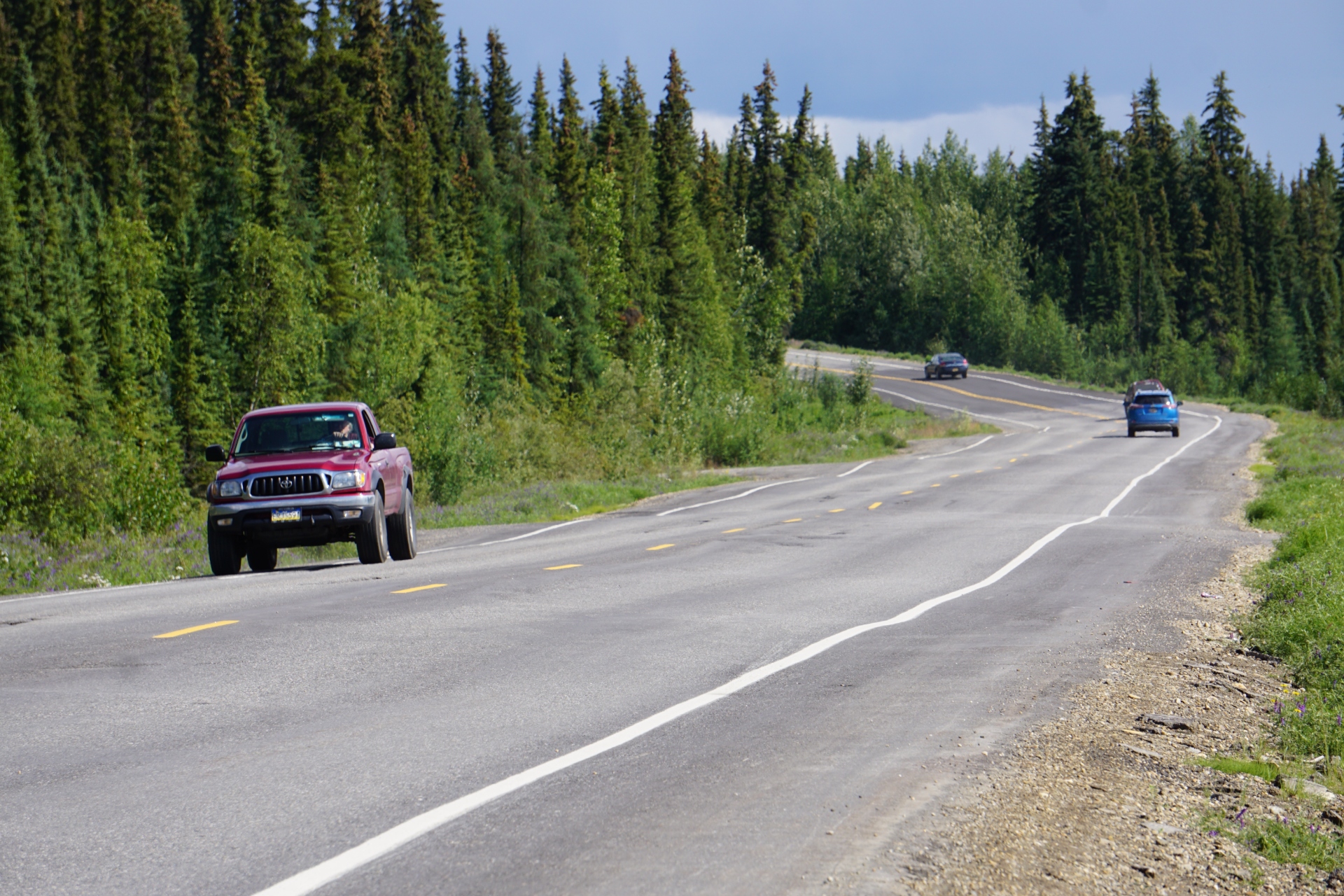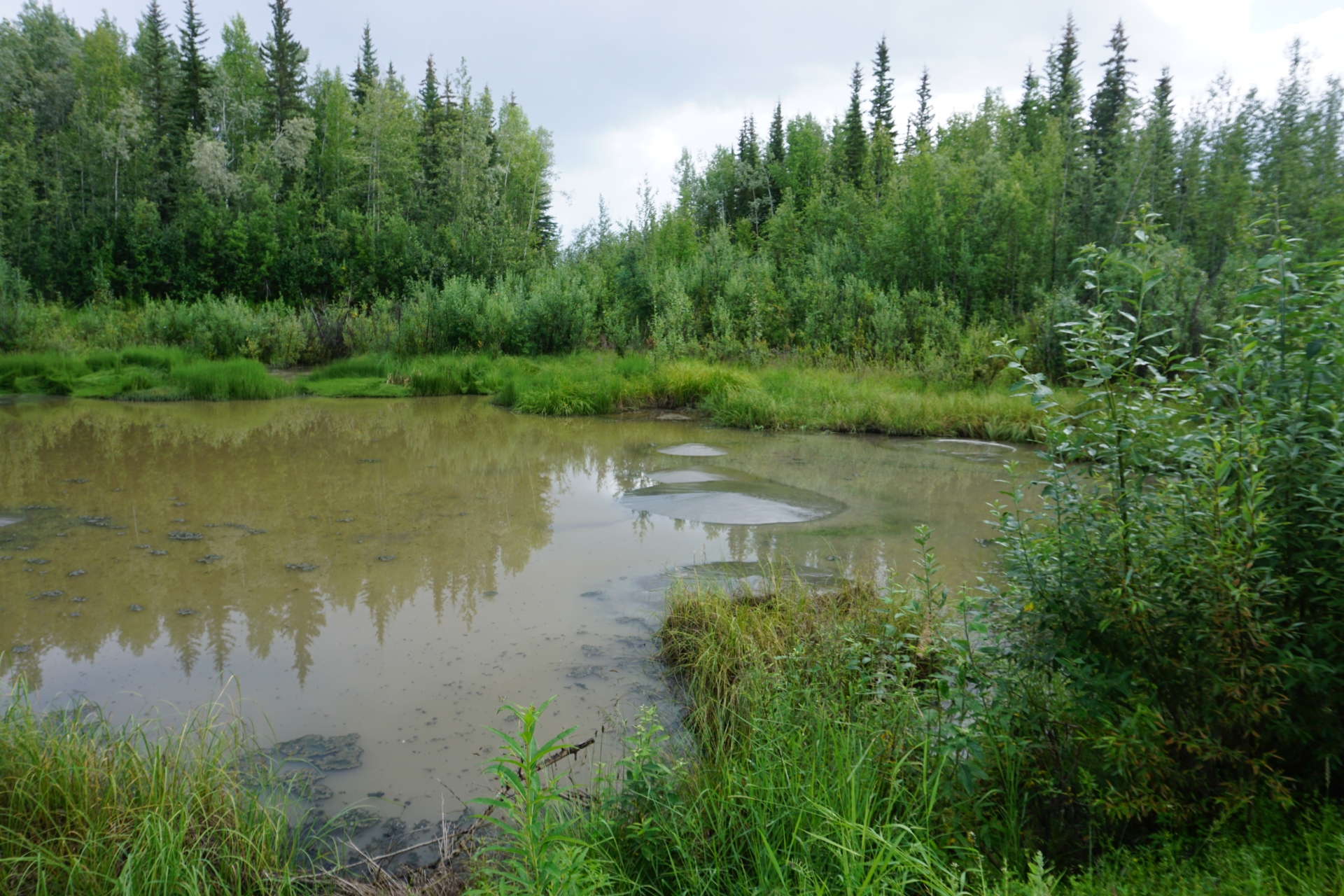Heavy summer rains speed permafrost thaw, a new study finds
The Arctic is getting rainier, but relatively few studies so far have taken rain's effect on permafrost thaw into account.

It’s widely understood that rising temperatures in the North are thawing permafrost. And the relationships between permafrost thaw and disturbances such wildfire, landslides and poorly planned construction are also widely understood.
Now add another thaw factor: Rain.
A new study that tracked results at a variety of interior Alaska permafrost sites found significant soil thaw in after rainy summers. In the most vulnerable of the sites, there was a one-to-one relationship — a centimeter of rain produced a centimeter of thaw, reported the study, published in the Nature journal Climate and Atmospheric Science.
Arctic precipitation expected to increase as the region warms, and the role of rain in permafrost thaw is just starting to get attention, said lead author Thomas Douglas of the U.S. Army Cold Regions Research and Engineering Laboratory at Fort Wainwright in Alaska.
“I think water can be underappreciated in its role, both thermal and hydrological,” Douglas said. Models projecting future thaw tend to focus on other factors, largely warming temperatures, he said. “Precipitation is one that people hadn’t thought of as something to factor in,” he said.
In their study, which used data from 2,750 measurements at permafrost sites, Douglas and his colleagues found that summer rainwater exacerbates current permafrost thawing trends — and does so in two ways. The liquid, which is by definition above freezing, transports heat into the ground, and gravity pulls that heat-carrying water to deeper levels.
“Water goes where it wants to go,” Douglas said. “It tends to pond in lowlands.”

The measurements used in the study were taken from 2013 to 2017. The period encompassed one relatively dry year, two years with near-average summer rain and two years — 2014 and 2016 — that were among the wettest Fairbanks summers on record.
The study sites represented five general boreal permafrost ecotypes, and all showed increased thaw after rainy summers. On average, end-of-season thaw after rainy summers was increased by 0.7 centimeters per centimeter of rain, the study found. But there were variations.
The most vulnerable to rain-induced thaw were wetlands where the rain expanded areas of standing water and already-disturbed areas, Douglas said.
The least vulnerable were the forested areas with floors carpeted by thick layers of moss and peat. “It’s like having a lid on your cooler closed,” That spongy layer insulates permafrost below, and it actually acts like a giant sponge. “The moss does a really nice job of sucking/soaking up the extra water and preventing it from going further down into the ground,” he said.
But those forested areas can switch from resilient to vulnerable if their spongy ground insulation is burned and removed by recent wildfires. There is already a sizeable body of research showing how wildfires expose permafrost to thaw, in interior Alaska and elsewhere.
Rain after fire could be a double-whammy for permafrost, and the rains need not come in the summer immediately following big fires to have a big impact, Douglas said. “Remember, it takes decades after a fire for the vegetation to come back,” he said.
The sites examined in the study represent about 70 percent of the permafrost ecotypes, Douglas said. Some notable ecotypes are missing — those at very high latitudes, such as the tundra-covered permafrost on Alaska’s North Slope, and those at high altitudes. He and his colleagues focus on sites that were available to them, he said. “Our field sites are pretty much all in lowlands,” he said.
Only a few other studies have examined role of rain in permafrost thaw. One, by Rebecca Neumann of the University of Washington, found that rainy springs increased the amount of methane released from interior Alaska bogs. Neumann’s 2019 study examined bogs in the Bonanza Creek Experimental Forest near Fairbanks; methane is one of the gases released when permafrost thaws.
But in the future, there may be more study of rain’s relationship to permafrost thaw because the rain load is expected to increase in the rapidly warming Arctic.
Thanks to increased evaporation and a poleward movement of moisture, the entire Arctic is expected to get 50 to 60 percent more precipitation, with most of that coming in the form of rain, according to a 2018 study by Richard Bintanja of the Royal Netherlands Meteorological Institute. A 2017 study by scientists at the University of Alaska Fairbanks projects a big increase in extreme weather events for Alaska by the end of the century, including a 53 percent increase in one-day heavy rain events. Another UAF study found that precipitation has already increased in Alaska over recent decades, up 17 percent from the middle of the 20th century to 2016, according to measurements at key weather stations.
This summer has been rainier than normal in Fairbanks, but not extremely so. Combined June and July rainfall at the Fairbanks airport was above average but not in the top-10 rainiest seasons, according to records that go back to 1925, said Rick Thoman of UAF’s Alaska Center for Climate Assessment and Policy.
Douglas and his colleagues are continuing to monitor their sites, though end-of-summer measurements will not come until October.
They are also continuing to find significant change below ground. In some of the sites used for the newly published study, Douglas said, soil that used to be frozen has now been converted to talik, the term for year-round thawed soil that exists in permafrost regions.